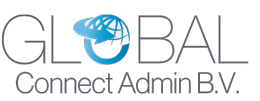
On 28 June 2025, the European Accessibility Act (EAA) officially came into force across the European Union, creating harmonised accessibility requirements for a wide range of mainstream consumer products and services.
The EAA is designed to improve access for people with disabilities, ensuring that essential products and services are usable by all. While the Act is an EU directive (EU 2019/882), enforcement is carried out through national laws in each of the 27 Member States—meaning businesses operating in multiple countries must comply with local regulations in every market they serve.
Who Is Affected?
The EAA applies to a defined list of consumer-facing products and services, including:
- Products: Personal computers, operating systems, smartphones, tablets, e-readers, ATMs, point-of-sale terminals, ticketing/check-in machines, and equipment related to digital television services
- Services: E-commerce platforms, banking and payment services, telecommunications, passenger transport (including real-time travel information), and audiovisual media services such as television broadcasting
Importantly, the law applies to all products sold in the EU, regardless of whether they are manufactured inside or outside the EU. There is no distinction between domestic and imported goods.
Core Accessibility Requirements
Under the EAA, covered products and services must be accessible by design, meeting standards that ensure:
- Perceivability – Information is available in multiple formats, such as text alternatives for images, captions for videos, and audio descriptions
- Operability – Interfaces work with various input methods and assistive technologies without requiring inaccessible actions
- Understandability – Content is clear, consistent, and easy to navigate
- Robustness – Compatibility with current and future assistive technologies, following recognised standards such as WCAG
- Accessible Customer Support – Helplines, chat services, and product manuals must be accessible
- Interoperability – Products must work with assistive devices like screen readers, Braille displays, and alternative input tools
Obligations Across the Supply Chain
The EAA impacts manufacturers, importers, distributors, and service providers:
- Manufacturers must draw up technical documentation, provide a declaration of conformity, and apply CE marking
- Importers and distributors must verify that products meet requirements and carry proper documentation
- Service providers must publish public accessibility statements detailing compliance, usage instructions, and accessible formats
If a product or service no longer meets accessibility requirements, operators must take immediate corrective action and notify national regulators in all affected countries.
Penalties for Non-Compliance
National regulators now have broad powers to enforce compliance, including:
- Fines and administrative penalties (e.g., Germany may impose fines of up to €100,000)
- Product withdrawal or service suspension
- Legal action by consumers or representative groups
This adds a strong legal risk to the existing commercial incentive—failing to meet accessibility standards excludes a large and underserved consumer base.
Exceptions and Transitional Measures
While the EAA applies broadly, there are limited exemptions:
- Microenterprises (fewer than 10 employees and turnover/balance sheet under €2 million)
- Fundamental alteration – If accessibility changes would fundamentally alter the nature of a product or service
- Disproportionate burden – If compliance would impose an excessive cost or difficulty
Certain transitional measures allow continued use of existing products and services until 28 June 2030 or, for self-service terminals, until the end of their useful life (maximum 20 years from initial use).
Practical Compliance Steps for Businesses
With the EAA now in effect, companies should:
- Identify in-scope products and services and applicable national requirements
- Conduct a gap analysis to compare current accessibility features with EAA requirements
- Implement changes to products, services, policies, and customer support
- Document any exemptions relied upon
- Train teams—especially those in design, development, and customer service
- Review supplier and partner contracts to ensure compliance responsibilities are clearly allocated
- Monitor and update compliance as products, services, or laws change
Importance of this Act
The EAA marks a major step toward an inclusive digital and physical marketplace in the EU. For businesses, it is both a legal obligation and a strategic opportunity: accessible design not only avoids penalties but also broadens market reach.
With enforcement now active, companies that act quickly to meet accessibility requirements will be better positioned to serve all customers—and to avoid the legal, reputational, and financial risks of non-compliance.
References
Carsten Kociok, D. P. (2025, July 21). European Accessibility Act Compliance: What Businesses in the EU Market Need to Know. Retrieved from The National Law Review : https://natlawreview.com/article/european-accessibility-act-compliance-what-businesses-eu-market-need-know
Deirdre Kilroy, K. M. (2025, July 28). EU: Accessibility Deadline – The European Accessibility Act comes into force. Retrieved from Bird&Bird: https://www.twobirds.com/en/insights/2025/eu-accessibility-deadline–the-european-accessibility-act-comes-into-force#:~:text=On%2028%20June%202025%2C%20the%20European%20Accessibility%20Act,laws%20of%20each%20of%20the%2027%20Member%20States.
Netherlands Enterprise Agency, RVO. (2025, June 28). European Accessibility Act for products and services. Retrieved from Business.gov.nl: https://business.gov.nl/amendment/european-accessibility-act-products-services/
Photo:
https://www.thebluediamondgallery.com/legal/images/regulations.jpg


